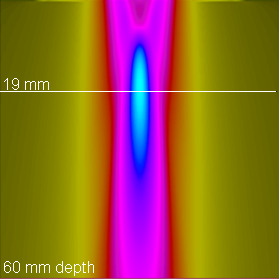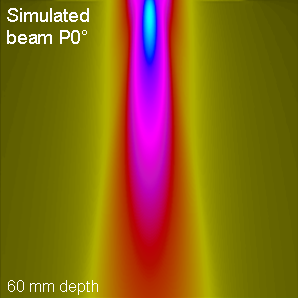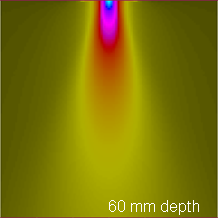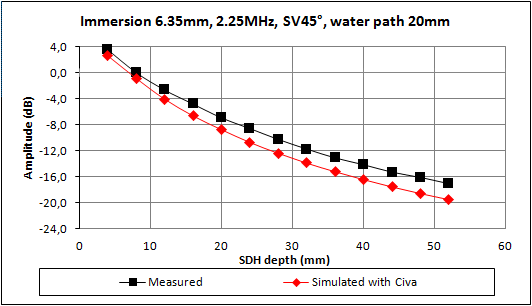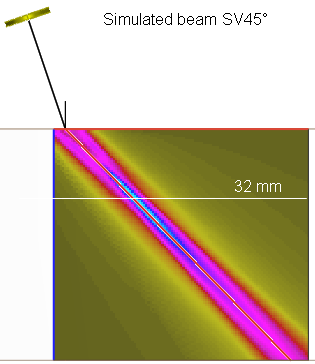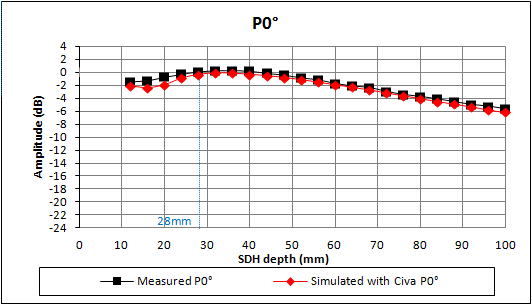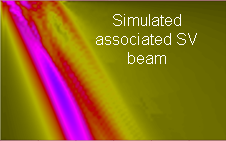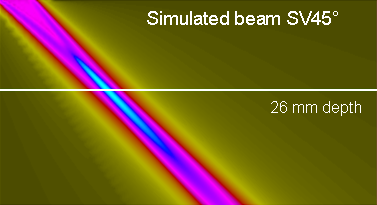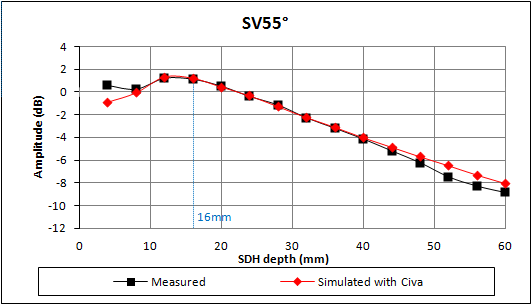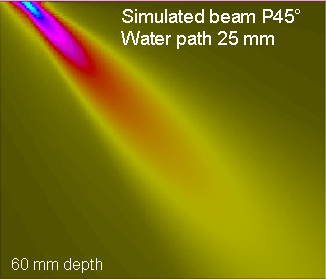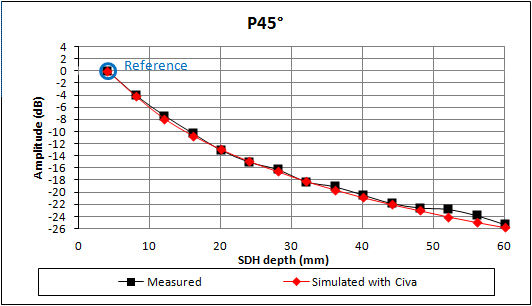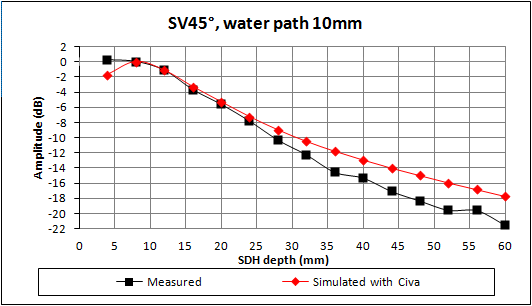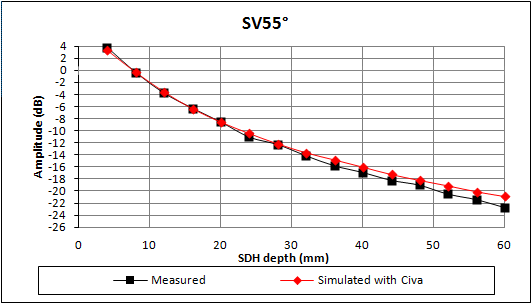UT – SDH: Side Drilled Holes at different depths and Immersion probes
Summary
Global overview:
| Immersion probes | 2.25 MHz Ø19 mm | 2.25 MHz Ø12.7 mm | 2.25 MHz Ø6.35 mm | 2.4 MHz Ø20 mm | 4.5 MHz Ø12.7 mm | 4.7 MHz Ø6.35 mm |
| P0° | Done | Done | Done | Done | ||
| P45° | Done | Done | ||||
| P60° | Done | Done | ||||
| SV45° | Done | Done | Done | Done | ||
| SV50° | Done | Done | ||||
| SV55° | Done | Done | ||||
| SV60° | Done | Done |
Configuration
This validation experiment deals with Ø2 mm SDH at different depths. The measurements are performed upon a planar steel block containing Ø2 mm SDH from 4 to 60 mm depth with 4 mm steps. As a reminder, the steel parameters are: density 7.9, P waves velocity: 5900 m/s and SV waves velocity: 3230 m/s. Since the SDH are inspected perpendicularly to their axis, the SOV interaction model is considered.
| Frequency | Crystal | Mode | Water path | Calibration depth |
| 2.25 MHz | 19 mm | P0° | 50 mm | 20 mm |
| 12.7 mm | P0° | 50 mm | 12 mm | |
| 6.35 mm | SV45°, P0° | 20 mm | 12 mm (P0°-20mm) | |
| 2.4 MHz | 20 mm | SV45°, SV60°, P45°, P60°, P0° | 50 mm | 32 mm (SV45°) |
| 4.5 Mhz | 12.7 mm | SV45° à SV60° | 20 mm | 32 mm (SV45°) |
| 4.7 MHz | 6.35 mm | P et SV, de 45°à 60° | 25 mm | 4 mm (P45°) |
RESULTS
For each probe, the simulated P or/and SV beam radiated in the specimen and in the incidence plane is displayed for at least one configuration.
Conclusion
Results show a good agreement with generally less than 2 dB difference for mono-element immersion probes.
The discrepancy may be a little higher in the near field. This is due to limitations of the model and is explained in details for rectangular contact probes.
Continue to Side drilled holes at different depths and contact probes
Back to Side drilled holes
Back to Calibration defects

